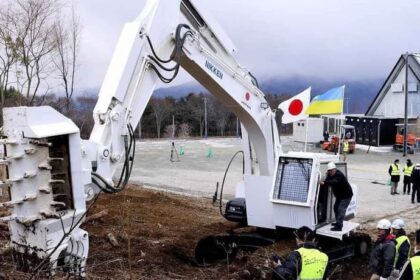A personal story that lit up a long quiet issue
When Tokihiro Naito, best known for creating Hydlide, one of the early Japanese action role playing games on personal computers in the 1980s, hit his fifties, he found something he had not expected. The game industry he helped build seemed to have little room for him. After a contract ended around age 50, he sent out applications far and wide. He says nearly all were declined during the document screening stage once companies saw his age, and only a handful moved to interviews. A few meetings felt more like fan encounters with a legend than real hiring steps. It took persistence, luck, and personal connections before he landed again, later becoming a director at M2, a respected studio known for high quality retro conversions and preservation work.
- A personal story that lit up a long quiet issue
- What the law says and what happens in practice
- How the current market makes things tougher
- Voices from veteran creators in Japan
- Why foreign employers look different
- Skills, titles, and career tracks that matter after 40
- What companies risk when they screen by age
- Steps policy makers and industry groups can consider
- Key Points
His story struck a nerve because it mirrors what many veteran developers describe. Several creators in Japan say that once they reach their late forties or fifties, interviews dry up. One former T and E Soft developer described applying to dozens of studios and receiving only two interviews, both explicitly raising age as a concern. Others say that domestic companies often will not meet them at all, while overseas studios will at least interview them without asking for a birthdate.
This is not a new complaint inside Japan’s wider tech field, but it is rarely discussed in public by prominent creators. Japan remains a country where standard resume templates (rirekisho) typically require a date of birth and a headshot. Seniority based pay is common. Many companies maintain retirement ages with re employment on lower pay, and corporate hierarchies can make hiring an older subordinate awkward for a manager with fewer years in the company. The result is a culture where age is visible on paper and socially loaded in practice. Veteran developers say the effect in game hiring is clear.
What the law says and what happens in practice
Japan does not have a strong, explicit nationwide ban on age discrimination in hiring. Legal language encourages opportunities for older workers and discourages age limits in job ads, but it contains wide exceptions and few penalties. Guidance urges companies to avoid stating age requirements unless there is a valid reason. Yet employers can often justify preferences in broad terms, and litigation over hiring decisions is rare and difficult. Damages in such cases are limited, so there is little deterrent for practices that screen by age.
Why employers still filter by age
Several forces push companies toward younger hires. Salary bands tied to seniority make older candidates more expensive even when companies claim to hire based on skill. Hiring an older person into a junior title can create social friction inside a team, especially if the new hire is older than the manager. Employers often assume younger candidates will adapt faster to new tools or live service workflows. Some executives also view younger staff as a better long term bet because they can grow with the company for many years. These beliefs are not always grounded in evidence, but they shape screening decisions that happen long before an interview.
Resumes and hiring signals that reveal age
Resume templates in Japan usually list age and graduation year. Recruiters can infer a candidate’s age in seconds. Many job seekers also report seeing job ads that hint at an age range through phrases like young team, junior level only, or second new graduate. Even if age is not written as a hard rule, the signal is clear. Once a hiring manager or an automated system filters by graduation year or career length, older candidates can get eliminated without a skills review.
How the current market makes things tougher
The past few years have brought a difficult cycle for game hiring globally. Studios expanded during the pandemic as demand for games surged, then slowed as the market normalized. Competition intensified, funding tightened, and large publishers reorganized. Layoffs spread, and a wave of experienced developers began searching at the same time. That cycle put even more pressure on applicants in their forties and fifties, especially in regions where age bias already existed.
Greg Holt, a long time game developer who has worked through multiple industry cycles since the 1990s, described what feels different now. He noted that this downturn is the first where many developers in their late forties and fifties are looking for work at scale.
Holt said the market became oversaturated after the pandemic hiring surge, then fell back to normal demand, and that it is the first downturn where large numbers of developers in their late 40s and 50s are searching for roles at once.
That surge of senior candidates collides with conservative staffing and a preference for younger hires in Japan. Large teams increasingly organize around live operations, data analytics, and content pipelines that never pause. Some managers assume older candidates will not fit those rhythms, even when their portfolios show strong track records. The combination of a tight market and visible birthdates hardens informal filters that were already there.
Voices from veteran creators in Japan
Beyond Naito’s experience, other developers share similar stories. A former T and E Soft programmer described applying to about 25 companies and receiving only two interviews. Both conversations were short, and age came up as a problem each time. Another veteran said that after turning 50, they could only get interviews with overseas studios. Domestic companies would not progress the application once age became clear.
Some veterans say they took interviews that never seemed intended to result in an offer. A few meetings felt like a chance for younger staff to meet a name they grew up with, not a serious process to fill a role. Others did receive offers, but only through personal networks. They describe a pattern in which skills are secondary to a quick glance at age, which decides whether a candidate gets a fair review at all.
Why foreign employers look different
Many foreign owned studios operating in Japan, and overseas studios hiring remotely, use hiring processes that do not ask for age. Western style resumes do not include a birthdate or photo. In the United States, federal law protects workers age 40 and older from discrimination (ADEA). European Union law also bars age discrimination with limited exceptions. Those legal frameworks, and the cultural expectation that age is not a job requirement, influence how teams write job ads and screen candidates. When overseas teams review portfolios and code samples without age data, older applicants have a better chance to reach an interview and showcase their skills.
What Japan based studios can consider
Studios in Japan that want broader access to talent can borrow a few simple practices. Remove age and photo fields from initial screening forms. Focus early reviews on shipped titles, live service experience, code samples, and design documents. Use structured interviews that score skills and collaboration scenarios rather than gut feel. Train hiring managers to consider team dynamics when an older hire reports to a younger lead, and to give the manager concrete tools to make that relationship productive. These steps do not change Japan’s pay structures by themselves, but they reduce the chance that age becomes a silent filter before a candidate can demonstrate value.
Skills, titles, and career tracks that matter after 40
Developers in their forties and fifties often hold deep product knowledge, hard lessons from shipped games, and mentorship skills that can accelerate younger teams. Companies still expect them to map into specific needs. In engineering, that can mean engine integration, rendering, build systems, tools, or performance optimization. In design, senior systems work, combat tuning, level pacing, and content pipelines are in demand. In art, technical art, rigging, shaders, lighting, and environment polish can carry a portfolio. Production and live operations roles value risk management, forecasting, vendor relations, and roadmap execution.
For older candidates, the review often turns on currency with modern workflows. Experience with Unreal Engine 5, DCC pipelines, source control at scale, and live service metrics is now common in job descriptions. That does not rule out those who built careers before these tools became dominant. It means portfolios should make currency obvious. Short case studies on solving performance pain points, examples of mentoring juniors, and clear evidence of collaboration across disciplines all help. Some veterans find success with contract roles, advisory work, and fractional leadership. Others go independent or join smaller teams where their experience closes gaps quickly.
What companies risk when they screen by age
Age based screening leaves real value on the table. Veteran developers often bring judgment that only accrues after projects with tight schedules, painful delays, and hard calls. They can spot production risks early, ask better questions in preproduction, and guide difficult tradeoffs during final weeks. Mixed age teams tend to manage risk better because they balance new ideas with pattern recognition built over many titles. Hiring only young staff can create a narrow view of problems and repeat mistakes that a seasoned hand would have avoided.
There is also a business case linked to players. Japan’s gaming population grew and diversified over the past decade. Players span a wide range of ages, and hardware makers are investing in more inclusive design. Tokyo Game Show 2025 added an accessibility support area. Sony released an Access controller for PlayStation 5 that allows flexible setups, and Capcom updated Street Fighter 6 with audio cues tailored to blind players. If the industry is expanding access for players across ages and abilities, then building teams with a wider range of life experience makes creative and commercial sense.
Steps policy makers and industry groups can consider
Industry norms change faster when policy, business incentives, and professional standards line up. Authorities can strengthen guidance around age in recruitment, move standard resume templates away from birthdates and photos, and run public campaigns that highlight successful mid career and late career hires. Grants for reskilling and short returnship programs can help veteran developers move into new engines and live operations roles. Industry associations can publish voluntary codes that promote skills based screening and track anonymized data on hiring and retention by age band. Studios can run pilot programs with blind portfolio reviews and share outcomes with peers. None of this requires an adversarial approach. It only asks hiring teams to give experienced candidates a real look based on what they can do.
Key Points
- Veteran creator Tokihiro Naito described widespread age based rejection after his contract ended around age 50
- Other Japanese developers in their fifties report few interviews and frequent references to age as a barrier
- Japan lacks a strong, enforceable nationwide ban on age discrimination in hiring and guidance has broad exceptions
- Resume templates in Japan usually reveal age, making early screening by age easy
- The recent market downturn put many senior developers into the job search at the same time
- Foreign owned and overseas studios often avoid asking age and focus on portfolios and shipped work
- Studios in Japan can adopt structured, skills focused screening and remove age data from early reviews
- Age based screening risks losing hard earned production judgment and mentorship that mixed age teams provide












